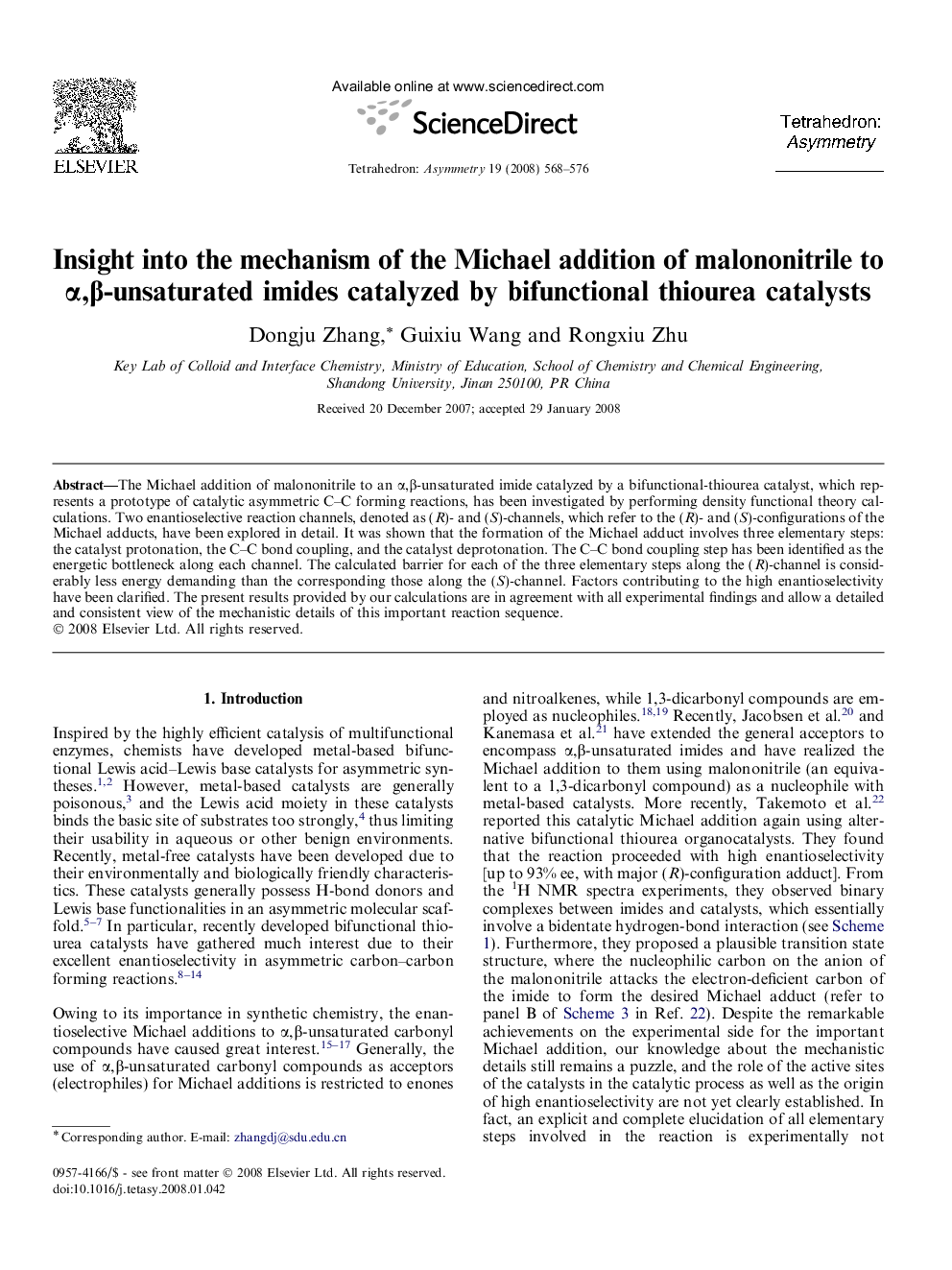| Article ID | Journal | Published Year | Pages | File Type |
|---|---|---|---|---|
| 1350266 | Tetrahedron: Asymmetry | 2008 | 9 Pages |
The Michael addition of malononitrile to an α,β-unsaturated imide catalyzed by a bifunctional-thiourea catalyst, which represents a prototype of catalytic asymmetric C–C forming reactions, has been investigated by performing density functional theory calculations. Two enantioselective reaction channels, denoted as (R)- and (S)-channels, which refer to the (R)- and (S)-configurations of the Michael adducts, have been explored in detail. It was shown that the formation of the Michael adduct involves three elementary steps: the catalyst protonation, the C–C bond coupling, and the catalyst deprotonation. The C–C bond coupling step has been identified as the energetic bottleneck along each channel. The calculated barrier for each of the three elementary steps along the (R)-channel is considerably less energy demanding than the corresponding those along the (S)-channel. Factors contributing to the high enantioselectivity have been clarified. The present results provided by our calculations are in agreement with all experimental findings and allow a detailed and consistent view of the mechanistic details of this important reaction sequence.
Graphical abstractFigure optionsDownload full-size imageDownload as PowerPoint slide
